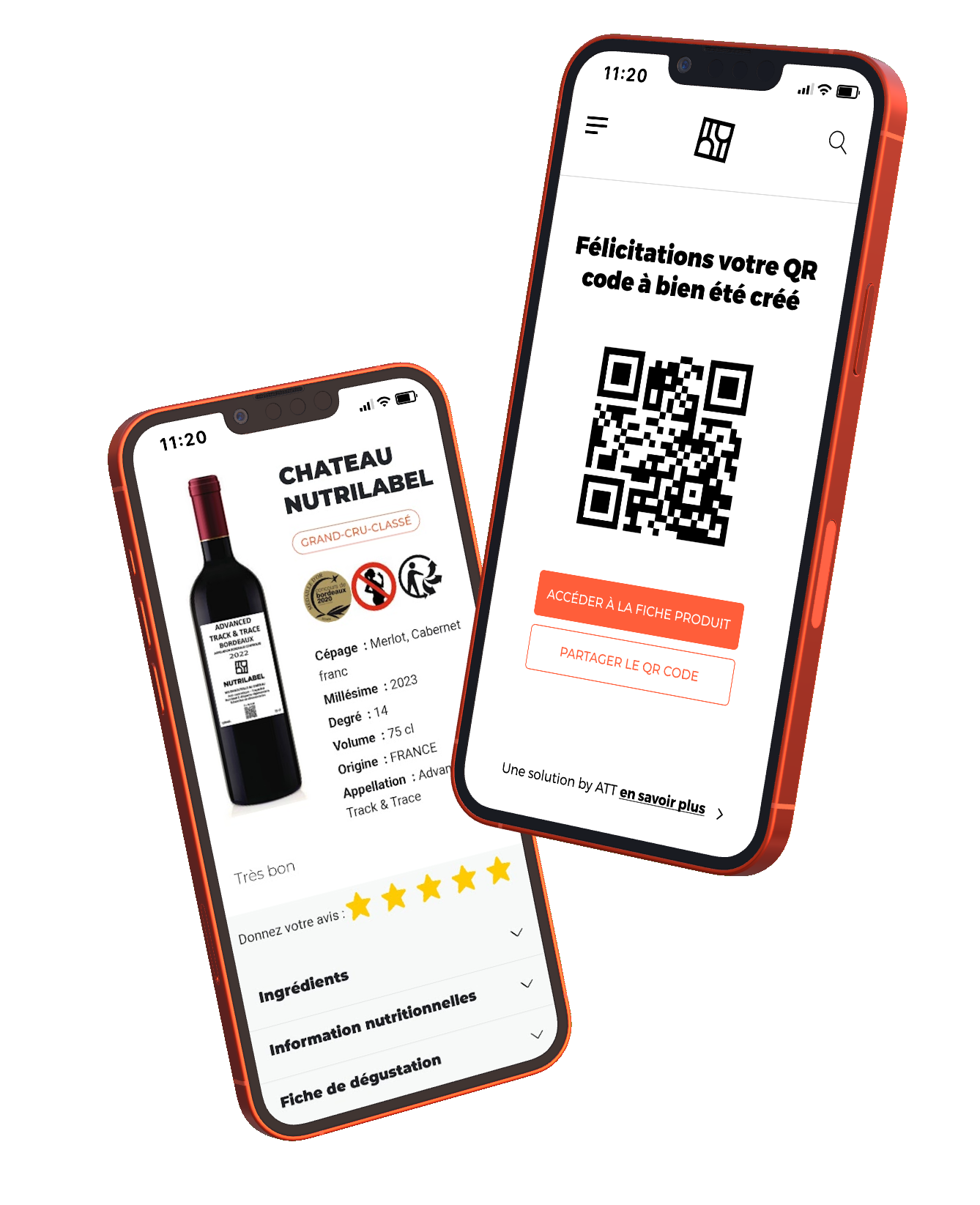
The European legislation will come into force on December 8, 2023 for alcoholic beverages produced after this date. Beverages produced before this date may continue to be marketed until stocks are exhausted.
All wines and flavored wine products marketed in the European Union will need to provide an ingredient list and a nutritional declaration per 100 ml.
The required new information can be communicated to consumers either directly on the physical product label or in a digital format (via a QR code or any other system readable by a smartphone). If the nutritional declaration is provided in digital form, the energy value of the product must be included on the label. If the ingredient list is provided in digital form, a reference to allergenic substances must be maintained on the label.
No, only the geographical location of consumers is determined when they consult a nutritional QR code to ensure the best possible experience and direct them to the appropriate language version, without tracking their activity beyond that.
The information can be entered in any of the 24 official EU languages. The platform then automatically generates translations into all the other official EU languages. Automatically translated fields are marked with a color code. For the custom texts you enter, you can adjust the translation according to your marketing target markets.
The declared nutritional values for a food product are those of the food as sold, including its energy value and the amounts of nutrients it contains. These values can be averages based on: (a) analysis of the food by the manufacturer, (b) calculation from known or actual average values of the ingredients used, or (c) calculation from generally established and accepted data.
According to the Commission’s services, presenting this mandatory information as part of the producers’ website does not appear to meet the conditions set out in Article 119, paragraph 5, of the amended CMO regulation, given that a wine producer’s website generally contains commercial information relevant to marketing and/or sales. Moreover, websites typically track user information.
Furthermore, the electronic solution/platform on which the information is placed should offer the same guarantees as those in place when the information is displayed on the packaging or on the attached label, in terms of readability, stability, reliability, durability, and accuracy of the information throughout the product’s lifecycle.
Yes, our system allows for customizing the content of the QR code based on the geographical area of the scan. For example, in the United States, you can define different content than nutritional facts.
Yes, the content can be modified at any time through the company’s Nutrilabel account. Once saved, the changes are instantly implemented and visible to any consumer scanning the QR code.
We have implemented a batch processing system through an Excel file to simplify bulk addition. We can assist you with this aspect, so feel free to consult us.
To ensure readability on all smartphones, a minimum size of 10mm by 10mm is recommended, along with a safety zone of 2mm around the code (resulting in a total area of 14mm by 14mm). Always remember to test your QR code before final printing.
Your data is hosted in a primary data center (COLT Datacenter – Paris Les Ulis) in France on dedicated servers. Your data is stored, secured, backed up, replicated, and redundant.
The Nutrilabel platform is open to any company, whether based in the EU or not, wishing to create regulatory QR codes to provide appropriate information to their consumers. However, the Client is not authorized to license or sublicense the service, nor to resell the generated QR codes.